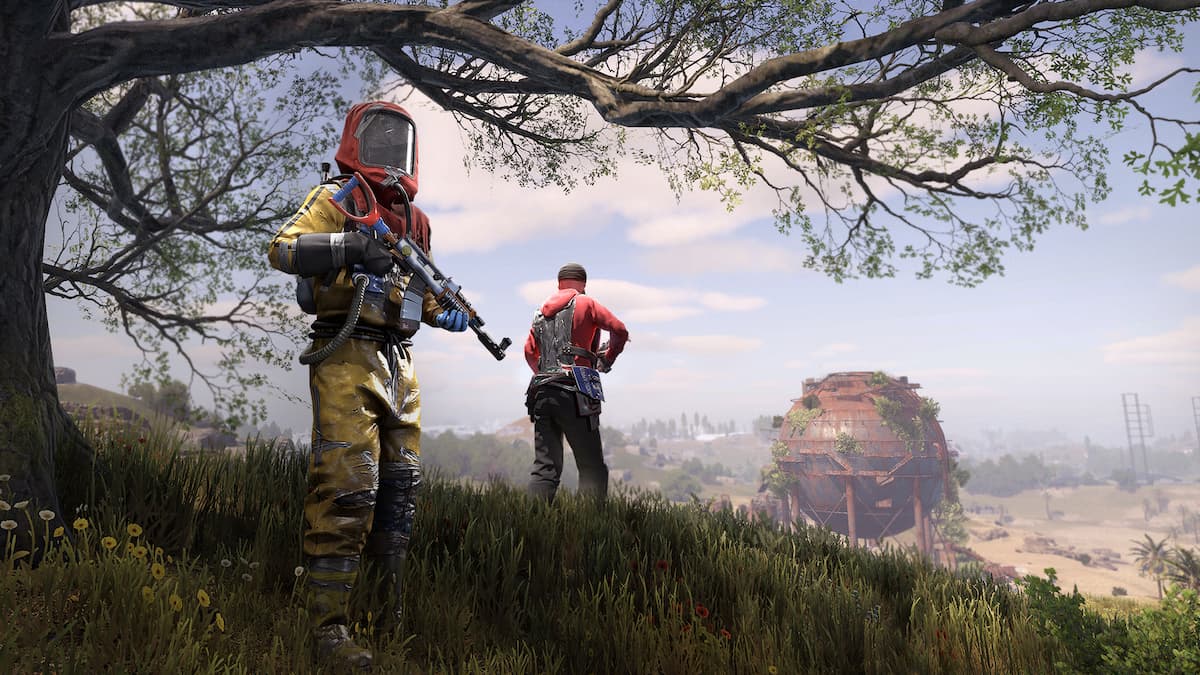
Although I technically own the game and played it once a decade ago; I had a horrible time playing Rust. Other players called me the N-word several times, I died almost instantly, my frame rates were trash, and after three hours I put it down and never played it again. Despite that first-run experience, I’ve spent a lot of time watching Rust videos in the last month.
Rust is like a hyper-realistic version of Minecraft but way more violent. You start naked on a beach with a rock and have to farm resources, craft tools, make clothes, and build shelter. That’s where the similarities to Minecraft stop. In Rust you’re on a single island with up to 200 other people in a player-vs-player Battle Royale-like situation. Over time alliances grow into clans, shelters expand into fortified bases, and the PvP combat escalates as users craft weapons like bows, guns, and rocket launchers. And then after a set period of time, the server wipes itself and deletes everything. The story resets.
Also different than Minecraft, across the map there are a dozen or so “monuments” or zones that players need to go to complete certain tasks. Gameplay-wise, this creates a nice forcing function where players must interact over limited resources to progress in their skill trees. It also creates opportunities for PvP combat and learning a bit more about what your neighbors are doing.
The storytelling
What I’ve found enjoyable about Rust is that it has an element of built-in storytelling. Clan rivalries, limited resources, stealth activities, combat, forced interactions, in-game events, all topped with a challenging progression system. And because the server duration is longer than a human could ever possibly stay awake, you won’t know the state of your game until you log in the next day. Was your base raided while you slept in real life? Drama!
Those are great elements for a story! The somewhat predictable plot and building-tension-conflict loop makes for a good rhythm. The best Rust streamers understand how to extract and bottle this drama and tension. Below are some of my favorite story formats.
Solo Survival
Rush has clans. Sometimes large clans. When a streamer chooses to survive a wipe without teaming up it creates an instant sort of sense of tension.
Base Building
A lot of videos are about building big, impenetrable bases. These have a good engineering vibes… but if I must admit, once you create total security the drama dissipates… that’s why you start picking fights with other clans.
Eco Raids
Eco-raiding is a form of min-maxing resources by breaking into an opponent’s base without using explosives. Spending the time to level-up your skill tree to get explosives is hard and takes forever, so why not find bases where you can break-in using simple tools like hammers, spears, and molotov cocktails. There’s an element of trolling to it, exploiting offline users, but it’s there’s an element of risk to it as well. While crime doesn’t always pay, it’s fun when it does. From a digital security standpoint, it goes to show that almost everyone has an flaw to exploit in their defenses.
Art of Rust
The PvP aspects of Rust seem inevitable, but some players take it beyond the pure game economy min-maxing and make something beautiful in the game spending precious hard-to-get resources on decorative tasks. It becomes a form of ephemeral art, a mono-no-aware. There are actually art community servers that function more like Minecraft’s creative mode, if that’s your thing, but I appreciate the challenge and temporary-ness of doing it in Vanilla Rust.
Is this PvP ASMR chill stream, chat?
I don’t fully understand how PvP games can be chill, but it seems to work. It creates a relaxing ASMR feeling for me. When I played Rust a decade ago I had such an awful stressful time I never wanted to pick the game up again ever in my life, but here I am a decade later watching hours and hours Rust play to wind down my day. And I think it all comes down to Rust’s storytelling. I know big game shops think about this, but if I were creating a big AAA game right now I’d think a lot about how each level, match, or instance tells a cohesive story and how your players could package that up into content, which is then marketing for your game.